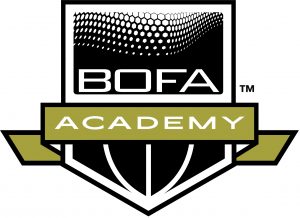Laser cutting & engraving: Expert insights from our latest BOFA Academy module

Demand is growing for laser engraving and cutting technology across multiple industrial and educational markets.
Larger businesses are leveraging the accuracy of lasering in sectors such as electronics – for example for PCB cutting out – while smaller operators are tapping into product customization, such as clothing marking and design features, and personalized jewelry. At the same time, education and technology centers are investing in systems for design projects and prototyping.
Materials being worked include metals, plastics, MDF, PVC, acrylic and textiles, all of which generate particulate or fume. Always speak to your laser supplier in the first instance to discuss the potential applications that the laser will be used for and they will advise how the laser needs to be connected, what the specific control interfaces are and how to optimize the routine operation of the system. We often get asked on our website Live Chat – ‘Why do I need an extraction unit?’ or ‘I’ve already got a laser cutter, but what type of extractor do I need?’
To help answer these questions and more, BOFA has created a laser cutting and engraving module in its free Academy portfolio to help users gain the knowledgeable support they need in choosing the appropriate fume and dust extraction system.
Extraction technology is fundamental to the successful operation of a laser cutting or engraving system, because these processes generate particulate or fume, depending on the materials being worked. Without extraction, these emissions could circulate in the workplace environment or potentially disrupt the laser beam through a build-up of debris. That’s why it’s so important to invest in technology that matches extraction flowrate and filter capacity with the laser output and material emissions.
This is important because not only will this contribute to compliant atmosphere management, it will also help maintain laser cutting and engraving accuracy, keeping the quality of work high while reducing the risk of unplanned downtime as a result of machine maintenance or breakdown.
BOFA units offer three stages of filtration for laser cutting and engraving:
- Pre-filtration to filter the majority of solid particles and droplets
- A HEPA filter to filter particles and droplets from air before it is returned to the workplace
- An activated carbon filter to capture gases or VOCs linked to specific processes
The exact specification of the filtration system will be determined by reference to Safety Data Sheets (SDS) for the substances in your process, which contain information on the properties and potential hazards linked to the materials being worked.
For example, when laser cutting nylon, the fume is almost 95% solid particulate with only 5% gaseous matter. Conversely, laser cutting acrylic releases up to 70% gases and 30% solid particulate.
BOFA’s product range for laser applications extends to more than 25 model types, each of which is available with custom options. The units cover a range of extraction flow rates from 180 to 4000 m³/hr (106 to 2354cfm), enabling a matched solution for just about every laser cutting or engraving process.
To help businesses and educational centers optimize the value of their laser investments, BOFA’s technical support team offers regular training and support, both to OEMs and end-users.
 The next online Academy training webinar covering laser cutting and engraving is running on Monday 7th and Wednesday 9th February 2022. To register, go to https://bofainternational.com/us/support/training-bofa-academy/sign-up-register/ and then sign-up for one of the sessions. Existing users will be able to log in through their normal BOFA portal credentials. All modules are free to attend.
The next online Academy training webinar covering laser cutting and engraving is running on Monday 7th and Wednesday 9th February 2022. To register, go to https://bofainternational.com/us/support/training-bofa-academy/sign-up-register/ and then sign-up for one of the sessions. Existing users will be able to log in through their normal BOFA portal credentials. All modules are free to attend.


